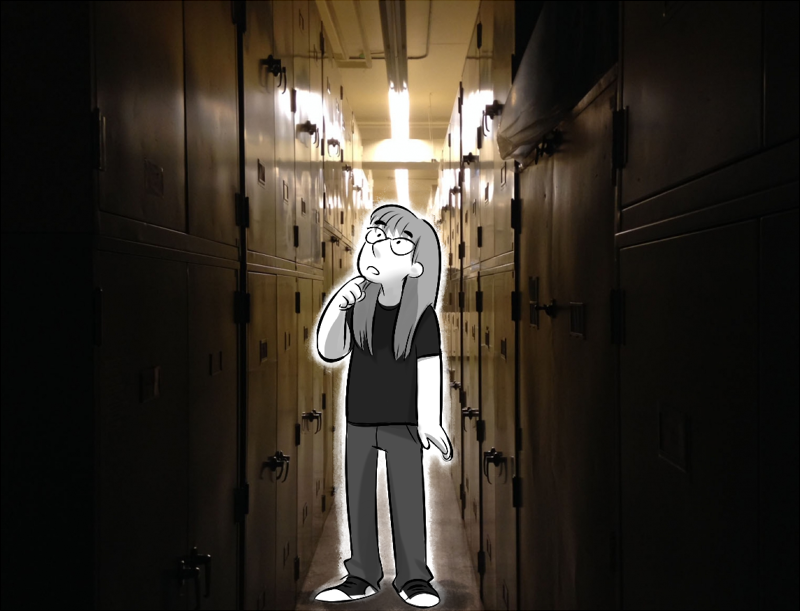 Photo by Royal Ontario Museum
Photo by Royal Ontario Museum
The phrase “look but don’t touch” has been ingrained in proper museum etiquette since its inception…but what about the times when you DO have to move displays to set them up or take them down? Here are the essential things I learned when handling collections during my orientation at the Royal Ontario Museum (ROM).
In my first few weeks at the internship, I was invited to participate in an orientation session. It was through this session that I gained insight into the variety of jobs available to interns and volunteers. In my last post, I discussed how my job is primarily related to the collections database and data analysis—but it doesn’t stop there! Jobs in artifact rehousing and artifact photography being two examples of other volunteer opportunities. Therefore, this entry aims to educate those wanting to work with material culture in a “hands-on” environment by teaching proper techniques. There will be links at the end to show how to get involved!
To begin, imagine yourself working behind the scenes in a collections room with artifact units all around you. You’ve been instructed to move artifacts to another room. What do you do? The first question you should ask yourself: IS HANDLING NECESSARY?
Proper permission is ALWAYS needed for moving an object, so you should ask your supervisor when doing so. Don’t dive blindly into those artifact units…make sure you know what you’re doing and what artifacts you’ve been instructed to move!When granted permission, you need to make sure you’re ready to handle the object. Don’t have anything on your person that could “catch”—rings, bracelets, necklaces, shirt buttons, etc.—and If you have long hair, tie it back. Also be sure to wear comfortable shoes that don’t slip. In almost every instance, you should be wearing gloves. There are different types of gloves that can be used, but the most popular are one-use nitrile gloves. There are some instances when gloves should NOT be worn, such as handling textiles or paper. Different objects require alternate ways of handling!

So you’ve been approved to handle a certain object and you’re outfitted to do so, what next?
The next step is: HOW WILL YOU HANDLE AND MOVE THE OBJECT?
During the orientation, my group was given a demonstration of how to properly hold objects. For vessels, we were instructed never to grab and lift the object by its projecting parts (handles, rims, arms, etc.) but instead support the base with one hand, while supporting the body or holding the rim with the other. A painting was used as an example of how you should test an object’s weight before committing to lifting it. Some objects can be deceiving in how much they look like they weigh—never be scared to ask for help moving an object! Smaller paintings should be carried with the image towards your body (to reduce the threat of tearing), and larger paintings should be moved with two people, in which they both announce their position relative to each other to reduce the danger of someone running into them as they round a corner. The demonstration showed us proper ways to transport items, the most common method to use a dolly with proper supportive material. Supporting artifacts with bean bags or foam cutouts is key for them not to be damaged; it is important to make sure artifacts don’t roll off when being moved, or smash into other objects. You should never use staircases when transporting objects, always an elevator.

You now know the basics of moving an object…but your job isn’t done yet!
Interns and volunteers are also responsible for helping to keep artifacts healthy. In the demonstration, my group was taught what happens to bronze artifacts if not properly taken care of by being shown arrowheads with bronze disease. The disease destroys the object, so volunteers and interns must keep a careful eye on any change with the collections. Textiles like wool and fur are susceptible to pests such as moths, and if any “frass” (fine debris like sawdust or tiny black pellets) is found, then action needs to be taken to reduce any further damage.
These are just some of the things I learned during my orientation at the ROM, but it’s amazing at how much care is put into moving these historic relics. Jobs in artifact rehousing and photography are incredibly important due to how densely populated the collections are, so if interested, check out this link and send an email to see if any volunteer opportunities are available. Hopefully you can get your “hands-on” one of these engaging opportunities!

